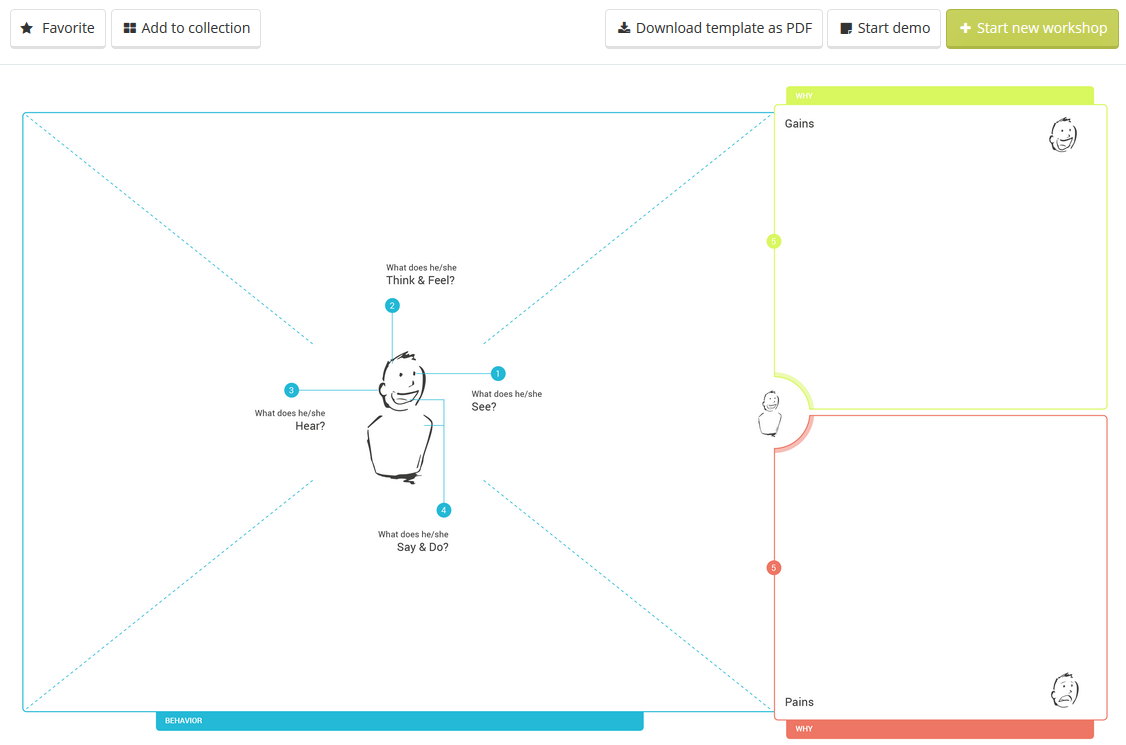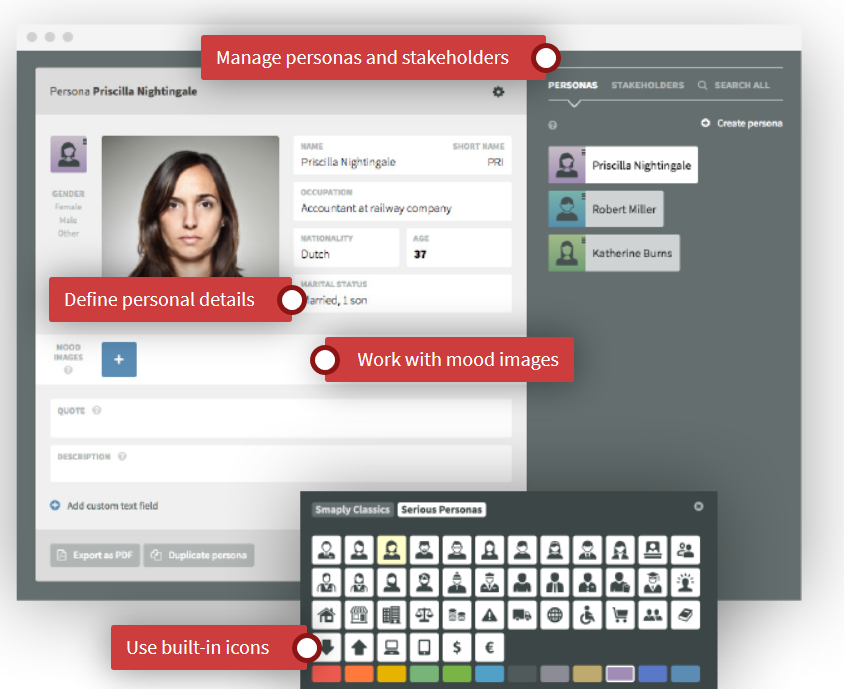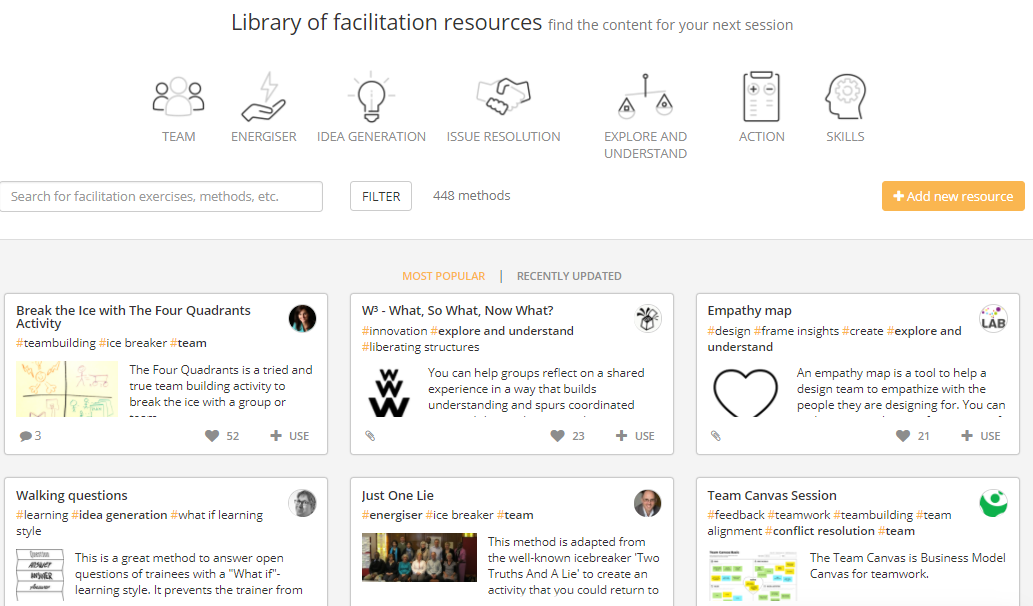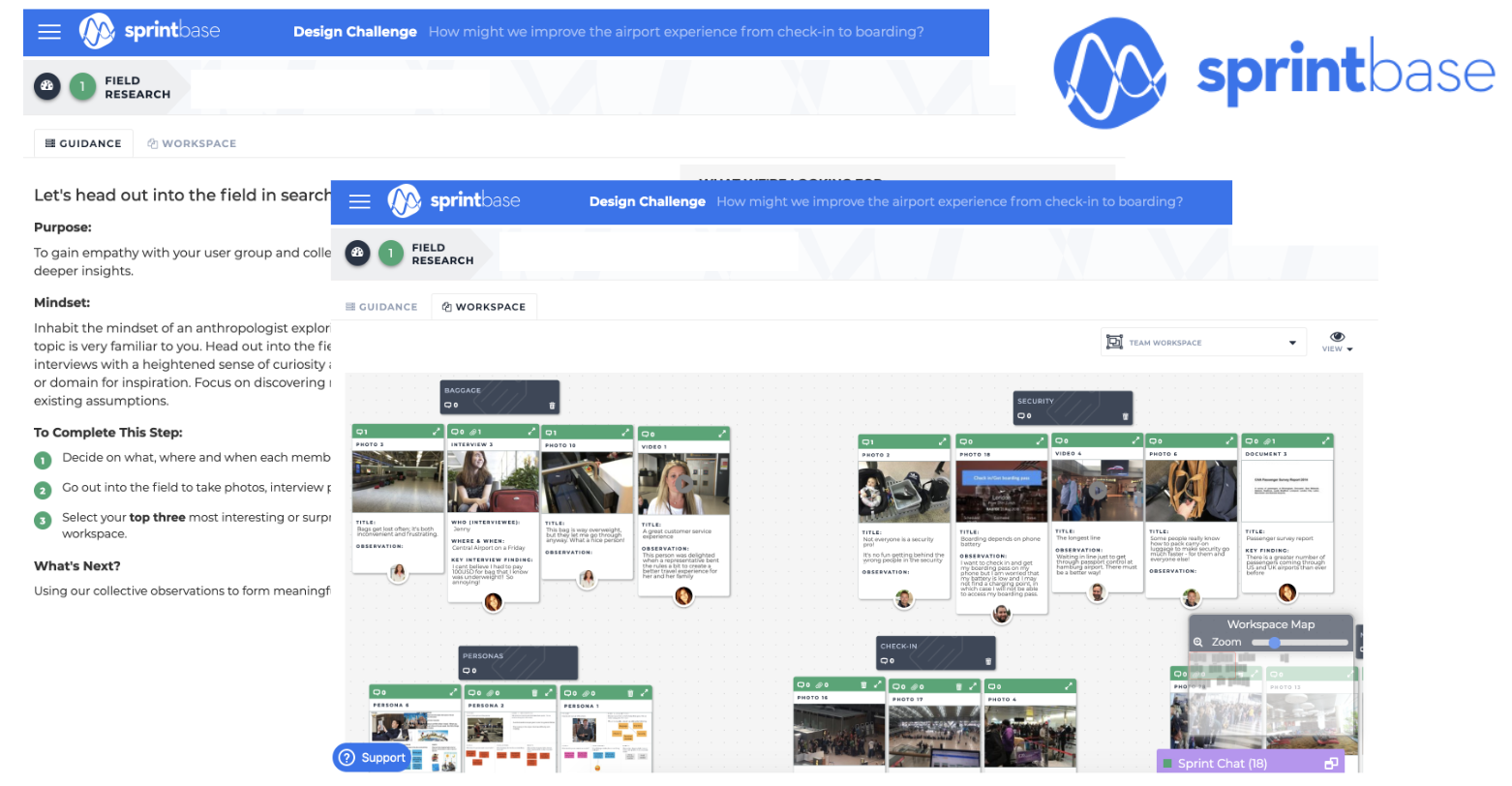
This post was originally posted by Robert Cserti on SessionLab.
Have you heard of Design Thinking?
Chances are you have.
It is one of the hottest buzzwords of today, easily found in articles and in the news. The education and business fields are going crazy over it, books are written about it, and service designers, creative agencies, career coaches, trainers and facilitators are using it. Perhaps you’re already applying it in your work or everyday life, too?
Since its debut in 1969 when Simon Herbert introduced the model in the Science of the Artificial, Design Thinking has revolutionized business models, education systems, processes of innovation, product and service design and human mindsets.
One of the reasons for its popularity is that it is human-centered, putting users and customers at the center of creation in order to understand their problems, thus making products and services more user-friendly.
Design Thinking may seem like just a tool, but this is not the case. Design Thinking is more of a mindset or a process with several different stages, and each stage can be supported with different tools to help in the understanding-designing process.

Best tools for each Design Thinking stage
Keeping in mind the stages of the model, we have collected some of the best Design Thinking tools to help you create real value for your customers and users.
- Empathize: Typeform, Zoom, Creatlr
- Define: Smaply, Userforge, MakeMyPersona
- Ideate: SessionLab, Stormboard, IdeaFlip
- Prototype: Boords, Mockingbird, POP
- Test: UserTesting, HotJar, PingPong
- For the complete process: Sprintbase, InVision, Mural, Miro
Let’s dive deeper to review each tool more in detail.
Online tools to support Empathizing
The first stage of the Design Thinking process is to empathize with your users by collecting as much information about them as you can with different set of tools. This human-centered approach helps experts focus on the user instead of their own assumptions about a problem.

For collecting (raw) information:
- Zoom – Sometimes you won’t be able to speak with all your interviewees aor customers in person, so it’s useful to have a video conferencing solution you can rely on. Zoom provides exceptionally reliable quality, minimizing audio or video latency issues that you usually encounter with most video conferencing applications. It has a wide variety of features available both for individual and business needs including the scheduling of calls, a dial-in phone number and recording audio and video calls even on the free service plan.
- Typeform arrived to the survey-making world with a fresh and simple look and an easy-to use interface. Now it’s not only about the look and feel, but the vast amount of – yet still intuitive – customisation options that allow you to create forms and questionnaires that doesn’t feel like ‘yet another boring survey’. Practical integrations also help you save time: for instance, you can easily set up responses to arrive to Slack and be recorded in a Google Sheet.
For organizing the information:
- Creatlr is an open platform for visual thinkers and designers to get on the same page, structure their thoughts and create more visually. You can browse through more than 200+ templates from empathy maps and customer journey maps to stakeholder analysis. When you select a certain templates, you can collaboratively organise information collected in your research to support your design process.
Design Thinking Solutions to support Defining
Once you have gathered a lot of information about the users, their needs and problems in the empathizing stage, you can analyze and synthesize it in order to sift out the (real) problem to be solved. To understand problems better, it is useful to create personas and define roles so you can attach needs and problems to different set of users. Once you have this you can see what patterns emerge and summarize problems into one problem statement.

Building Customer Personas with Smaply
- Smaply, a platform to manage your customer experience, allows you to create, share and present your customer journey maps, personas and stakeholder maps. What’s great for design thinking is that it provides a beautiful and detailed persona and stakeholder editor that helps you defining the personas for your design project.
- Userforge promises to help you create in-depth and realistic personas with less clicks than it takes in design software. To foster collaboration and fast decision making you can share personas by URL instead of by the slow process of invitation. The application is easy to use, anyone can create usable personas without design skills. And it is totally free.
- MakeMyPersona by Hubspot is a slick solution that can help you structure the information you have about your (buyer) personas. It guides you through 19 essential questions that covers the most important aspects to build up your personas. Your answers and the output personas can be downloaded in Word format via email. It’s a simple tool for beginners to get started thinking about personas.
Tools for Ideation
This stage is about coming up with solutions based on the problem statement. At this point in the process you’re not concerned about finding the best solution but creating as many possible solutions as you can with the help of brainstorming and other ideation techniques.

- The open library of more than 600+ facilitation tools from SessionLab offers a wide variety of ideation methods. From brainwriting to 3-12-3 brainstorm, you can find the best stand-alone activities and complete workshop templates to get ideas flowing in the team. It is free to use, and by signing up you can also save your favourites or add your own tools to the library.
- Whiteboard apps are practical if you need a platform for brainstorming online with your team. For the use case of collecting brainstorming, organising ideas and prioritising, Stormboard stands out with its functionality to manage sticky notes on different templates, allow collaborators to rate and evaluate ideas and powerful reporting options. Some other whiteboarding tools – Mural, Miro – stand out with their with their visual capability to support creative design work, see them highlighted among the tools that support the complete design workflow.
- Ideaflip is a simple yet elegant tool for brainstorming sessions either with your team or alone. Anyone can add their ideas on post-it like notes to the virtual space. Ideaflip enables commenting and idea grouping for easy and fast decision-making.
Prototyping apps
By this stage you will have a few solutions or features that you will want to test. Prototypes do not have to be too detailed, high-quality or actually even working yet. The idea is to create a prototype that is sufficiently able to display a specific feature or working mode.

POP – an easy-to-use mobile application to turn sketches into animations
- Boords aims to be your complete storyboard toolbox. Their storyboard creator allows you to experiment with pictures and gifs, voiceover and action text or redraw existing frames. With the Animation tool you can actually make animation from your frames with sounds. Plus you can collaborate with anyone in real time.
- Mockingbird has a clean and user-friendly interface making it one of the best prototyping and wireframe applications. Features include drag and drop UI, linking together several mockups to make it interactive and smart text resizing. Sharing with direct links makes collaboration super easy.
- POP is a mobile application for turning your sketches into animations. It is very easy – just take snaps of your sketches or pictures and the app merges them into an interactive prototype. The best thing about POP is that it allows you to share your prototype and get feedback from users instantly.
Testing platforms
When testing the complete product or service, it often happens that data gained through testing will redefine the problem statement or several features, making Design Thinking a real iterative process. While nothing beats the ultimate experience of seeing your users interacting live with a prototype, there are various different tools you can use when you have to conduct user testing remotely. And if your prototype is a website, you can also benefit from website analytics and screen capture tools.

Hotjar records how users interact with your website
- UserTesting.com one of the best and biggest names in user testing applications. Pick users according to what you want to test whether it’s a website or mobile app. The platform records every move your testers make, so you can truly understand how they navigate and perform the tasks you assign to them. Try it out for free, and it is 49 USD per video session after that.
- Another great tool for testing is Hotjar. This all-in-one analytics and feedback tool enables you to collect data on your funnel conversions, see where people click and how they navigate on your site. They offer instant feedback from users and feedback polls to identify problems the user may be having. The basic plan is free and collects data from 2000 page views/day.
- Pingpong is a user-research platform where you can find tens of thousand of testers from all over the world. The platform will automatically set up the best testers for you. You can easily schedule interviews which can be recorded and later analyzed. They work on a credit-based approach: 1 credit = 30 minute interview = 75 Euro.
Design thinking tools for the complete process
There are versatile apps and online softwares that can support you throughout the whole design thinking process. These tend to fall into two categories by their approach: they are either tools specifically designed to guide you through each step of the design thinking process, or really flexible but generic solutions, such as collaborative online boards.

- Sprintbase is a dedicated design thinking software excelling with its focus: Each step of the design process is supported by a dedicated structure and functionality in the app, and you are smartly guided through the whole workflow. What really distinguishes Sprintbase from a generic white-boarding platform is that it has a strong aspect of educating users on ‘how to do innovation well’ through its tutorials and templates. Imagine it as a combination of a specialised designed thinking software combined with practical educational resources to develop innovation skills.
- InVision stands on a broader field by being a digital product design platform not focusing as much on the design thinking process. But in its suite of powerful tools with outstanding user experience you can find solutions for collecting inspiration, organising information, creating and sharing ideas, sketching, wireframing, and designing prototypes.
Collaborative online boards: Mural and Miro (formerly RealtimeBoard): Both of these online tools provide a visual collaboration platform for teams. You can can create real time whiteboards, work both with sticky notes and free hand drawing, brainstorm and structure information for a design process.
+1 Browse through more than 500+ design tools and resources on Public Design Vault ! You will find everything needed for design work from templates to sort cards, toolkits and podcasts. Make sure to check it out!

